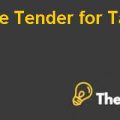
Question 1
In a case filed in the Ontario Superior Court of Justice, Yu Enterprises Inc. ("Yu") sued Wang Exports Ltd. ("Wang") for breach of contract. Yu claimed damages of $500,000. Although Wang denied liability, it formally offered to settle the claim for $200,000. Yu rejected that offer, but in response it formally offered to settle its claim for $400,000. Wang rejected that offer. The case has now gone to trial. Explain what order the judge will likely make with respect to costs (i.e. legal expenses incurred during the litigation) if the judge decides that (a) Wang is liable for $450,000 of damages, (b) Wang is liable for $100,000 of damages, or (c) Wang is not liable for any damages.s
Answer
Both parties are required to abide by the contract terms and condition to discharge their contractual liability. By doing so and performing as per the contract, each party is free from it. In circumstances when either party fails to fulfill the contractual terms, then it will be known as breach of contract and there is no legal existence. The party who breaches the contact is liable to pay the remedy due to the loss suffered by the other party. If contractual obligations are not respected, the delinquent party is said to be in breach of contract. Breach of contract allows a party to bring another party in default to court and to get the court to correct the situation, as best the court can.
In this case, Yu Enterprises sued Wang exports for the breach of the contract and claimed damages of $500,000. In this case scenario, the most likely remedies will as follow. The first set of rules comes from common law, while the second set of rules comes from the law of the state. The actual amount of the remedy will be decided by determining the both set of rules.
Wang is liable for $450,000 of damages
If it is proved that Wang was in the breach of contract then the court must decide the amount that must be paid by the defendant to the claimant. There will be a test which will be used to determine the exact value of the loss that will be known as the diminution of value test. Wang will have to pay $450,000 to the Yu Enterprises if it is determined that breach of contract will cause loss up to $450,000, then there is no compensation paid against the legal expenses.
b) Wang is liable for $100,000 of damages
There is also a payment of partial damages if it is proved in court of law that both parties was involved in the breach of the contract. Outside the court settlement is not considerable.
(c) Wang is not liable for any damages.
If it was determined by the court law that Wang was not guilty of the breach of contract, then there would be no commendation paid.
Question 2
You and I are competitors in the publishing business. You and I both know that Amani is my best employee and that much of my success is due to her efforts. You want to find some way of causing Amani to stop working for me and, if possible, to start working for you. You have persuaded her to meet with you for a discussion of her future employment. You intend to tell her that I am a lousy employer. Identify and explain the risk management issues that you should bear in mind as you prepare for that meeting.
Answers
There are many steps that can be taken in order to minimize the risk and allow Amani to work in a suitable and peaceful environment and decrease the tension between the two competitors. There is no legal constraint for a meeting with the competitor unless there is no sharing of information of the existing employer which causes loss and damages. The meeting should be conducted and should be discussed, but before the meeting if possible the employee should inform to the employer, but if not possible then during the meeting certain things should be borne in the mind such as there should be no disclosure of information that might help competitor to gain advantage. No important information should be told. The cause of defamation can also be possible if the employee says something against the employer. There is also a non-compete agreement, which limits the capacity of the employee to use the knowledge of the former employee to use in the new business of the same nature. Such things must be considered before the meeting and during the meeting and if competitors offer the employment then it should be assessed according to employment contracts. It is also legally forbidden that trade secrets sold to the competitor and legal case are implied on the employee that is involved in such activities. Other risk management activities involve that meeting should be on telephone or video conference rather than face to face to avoid such other complex issues...........
This is just a sample partial case solution. Please place the order on the website to order your own originally done case solution.












